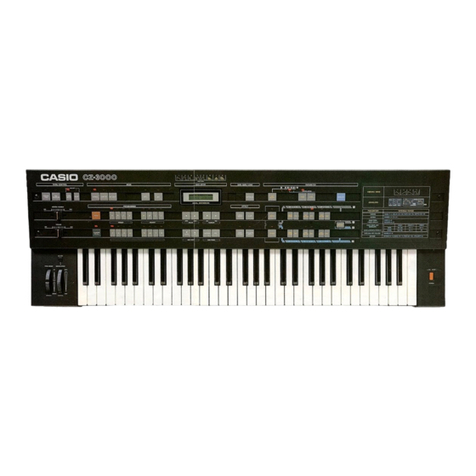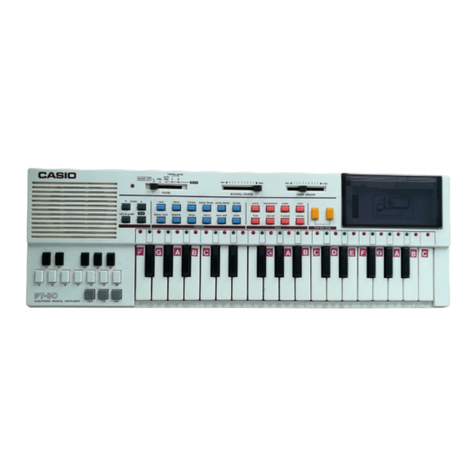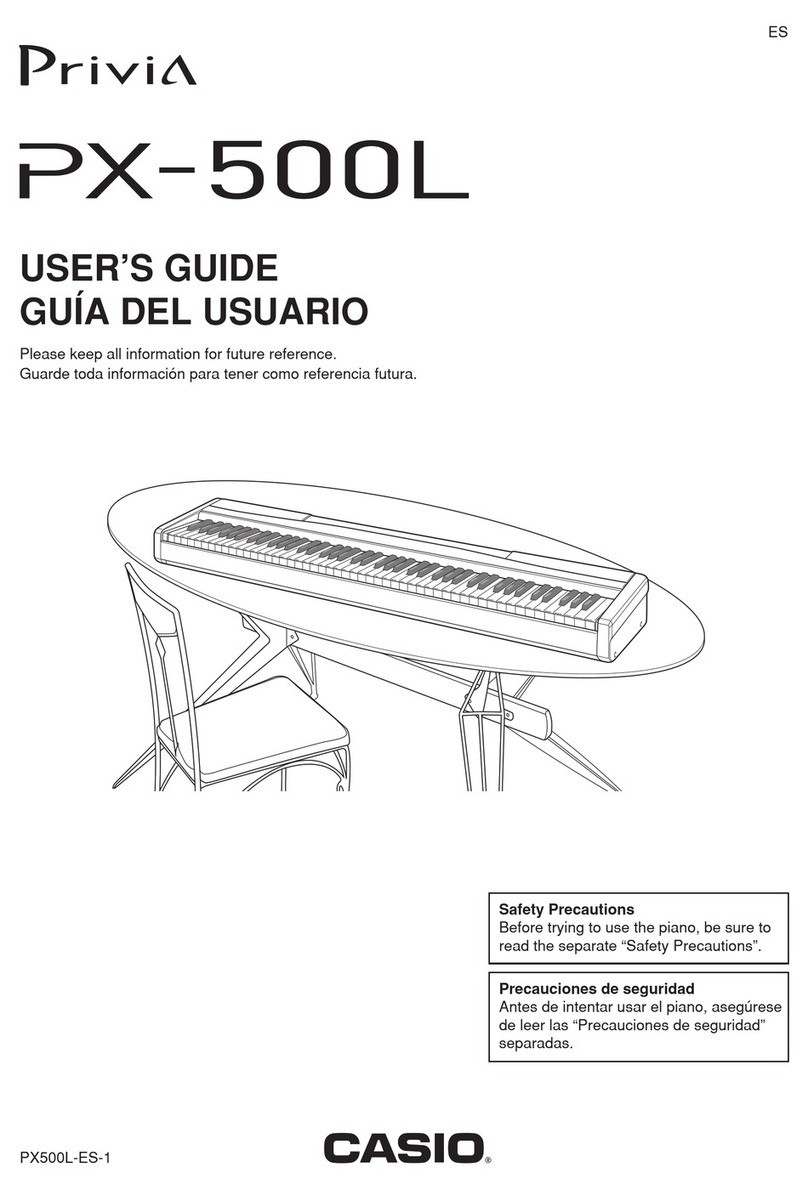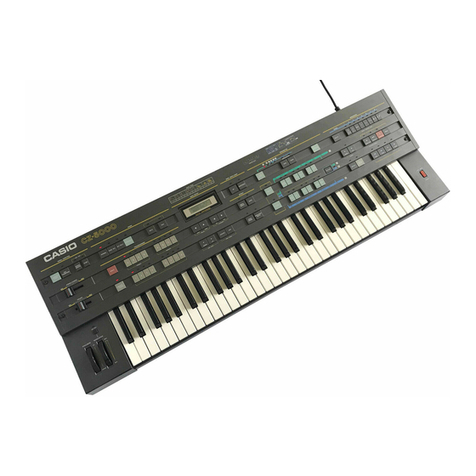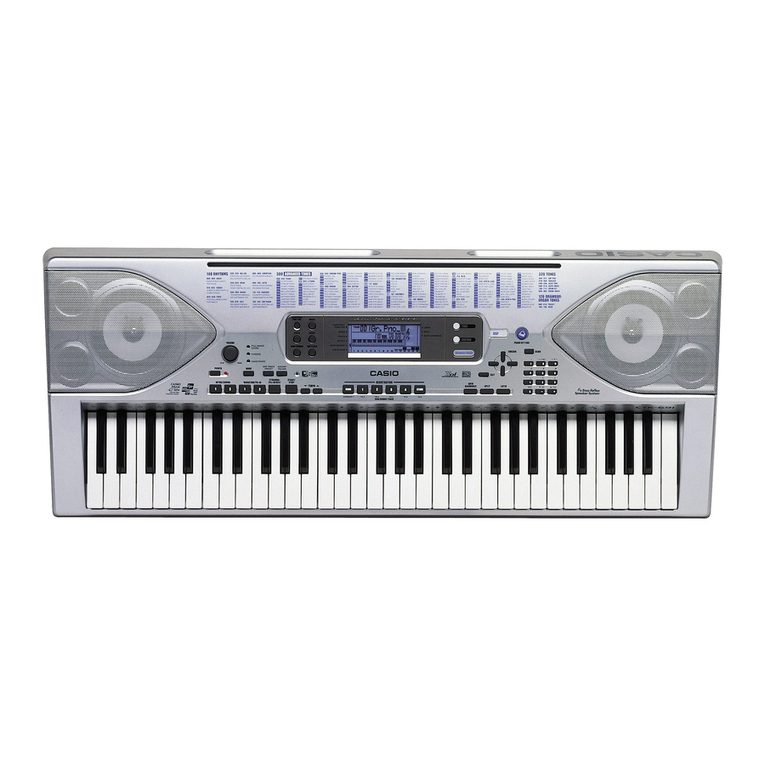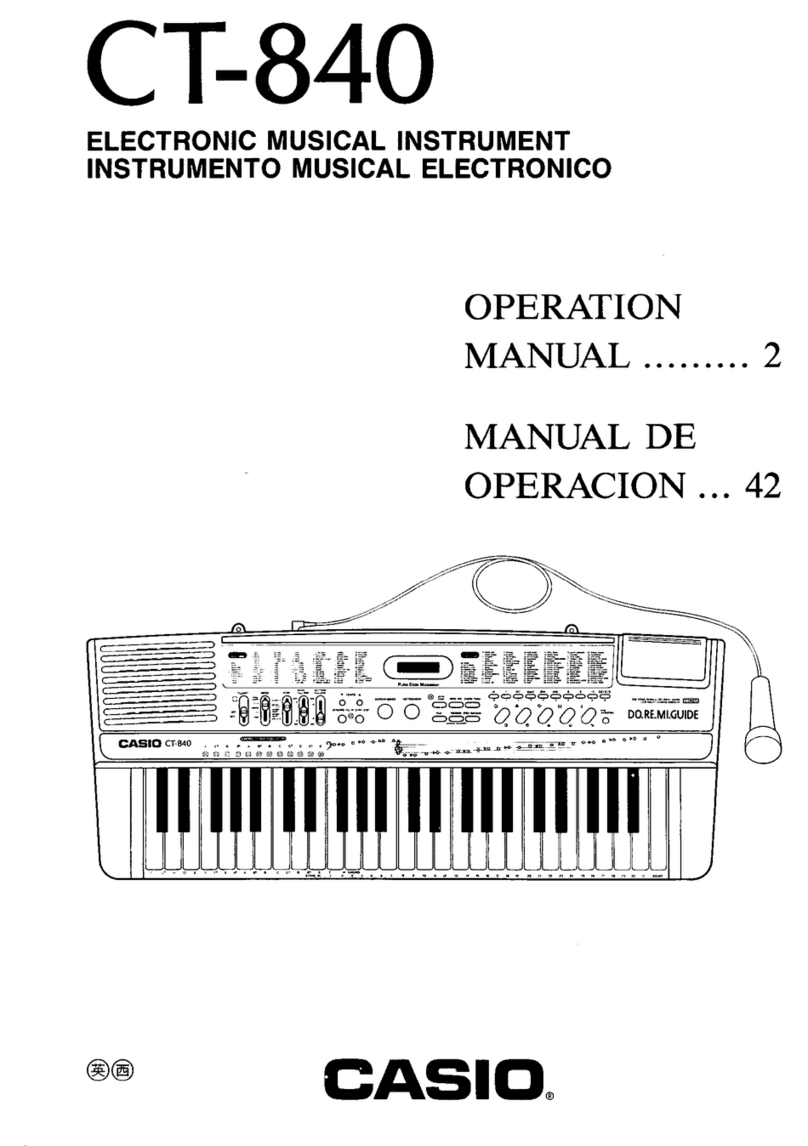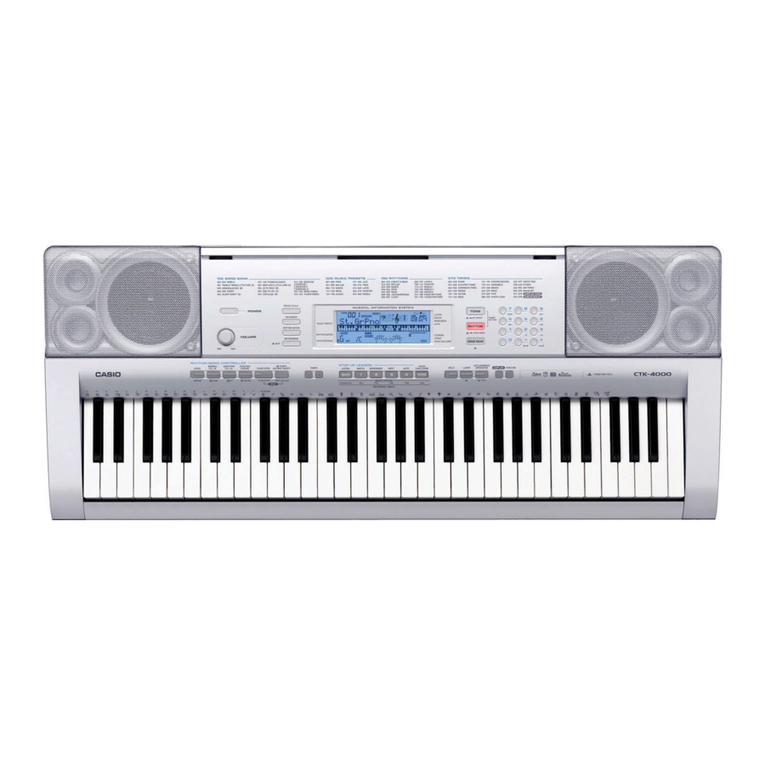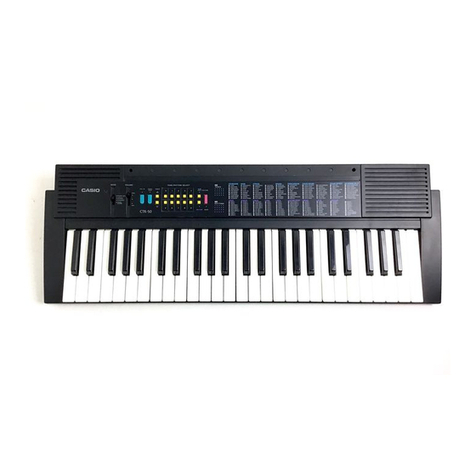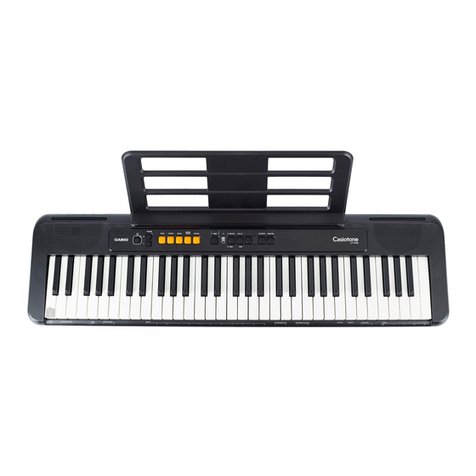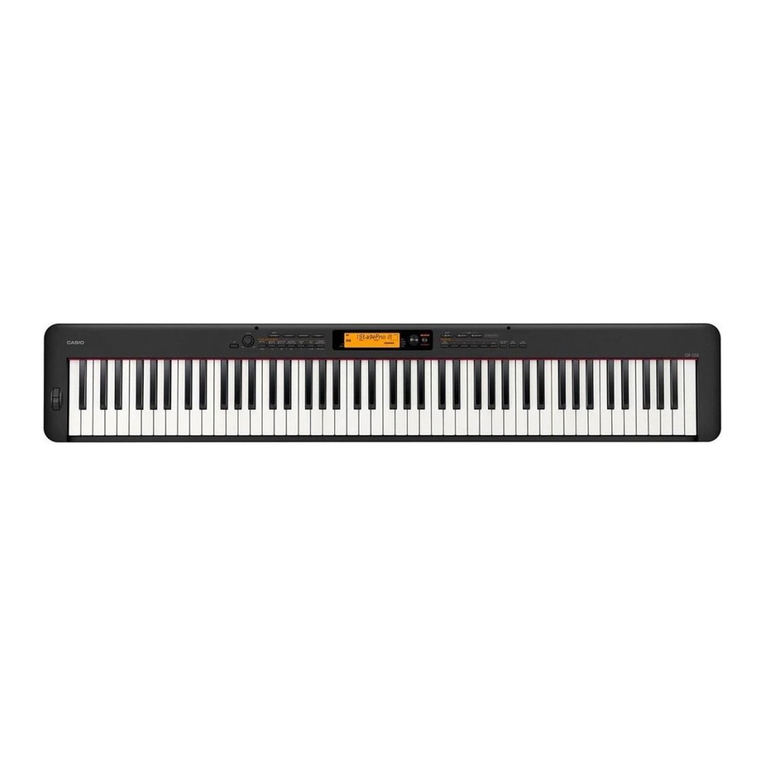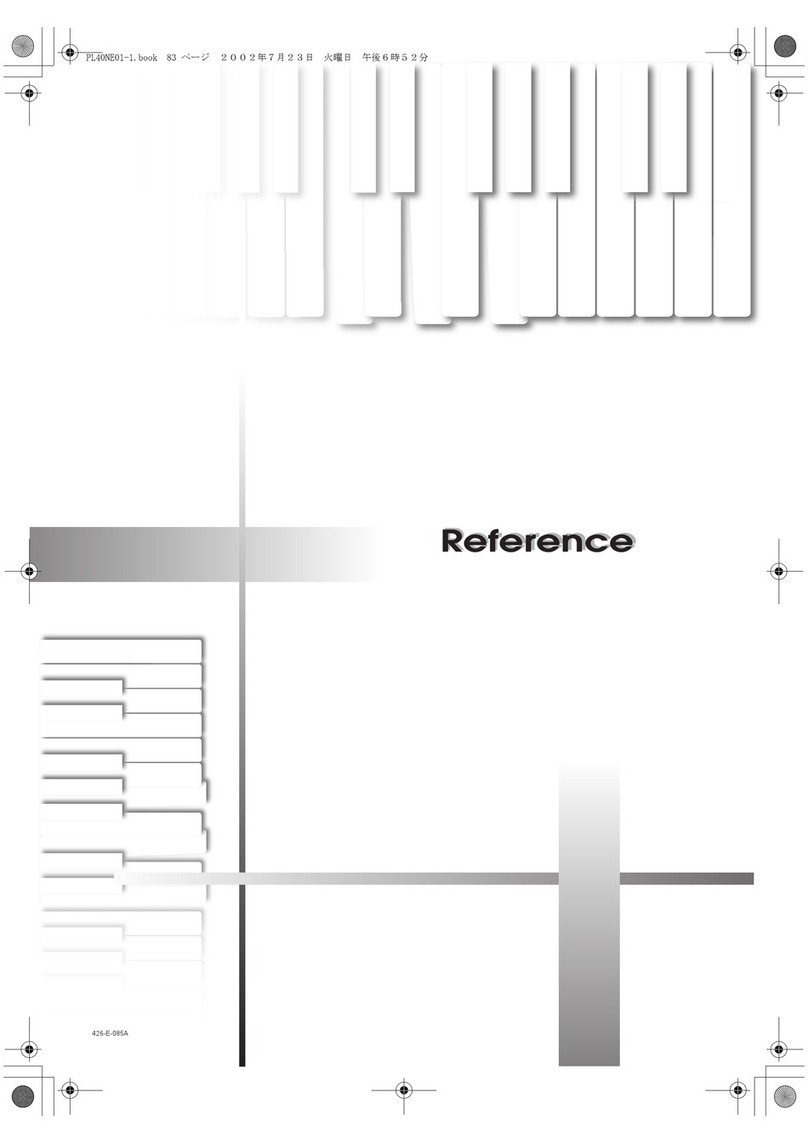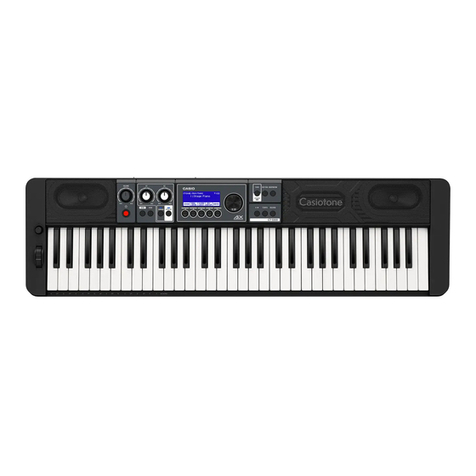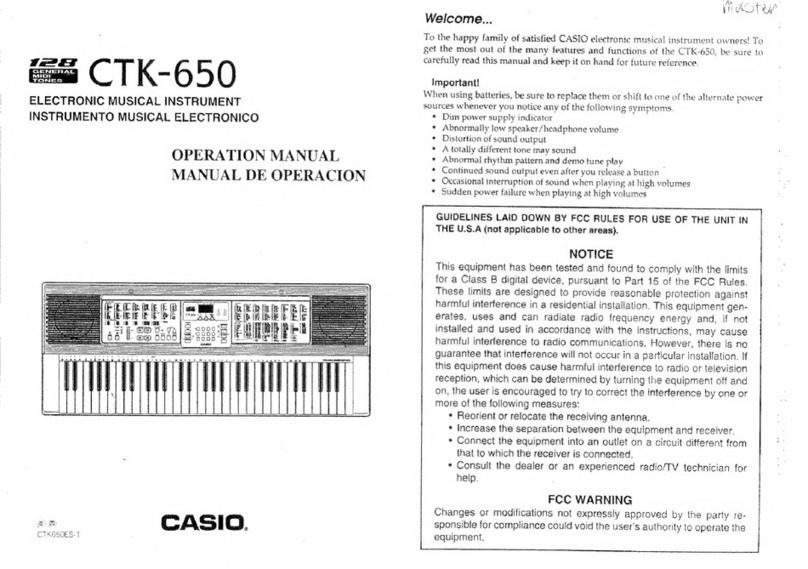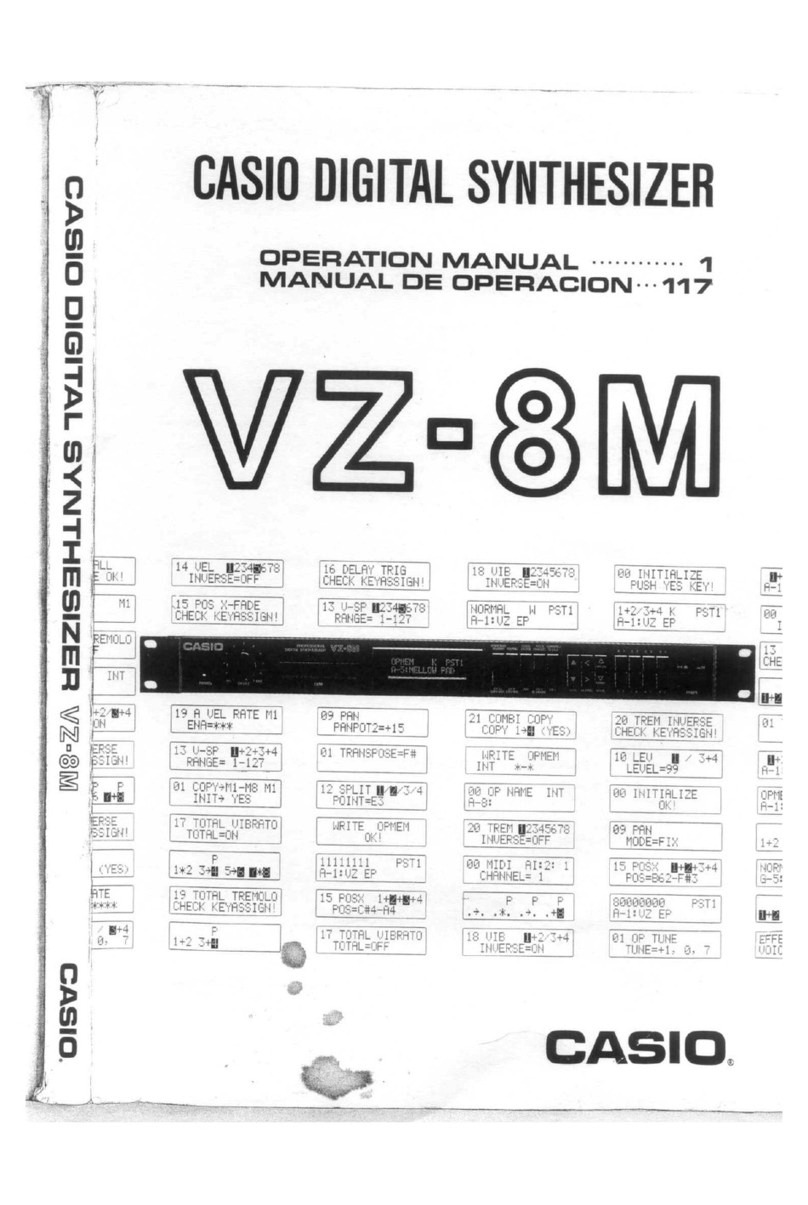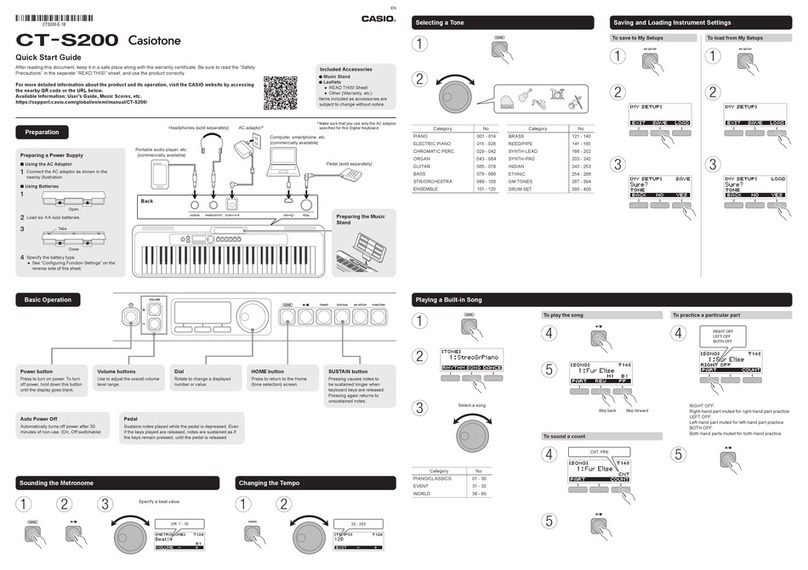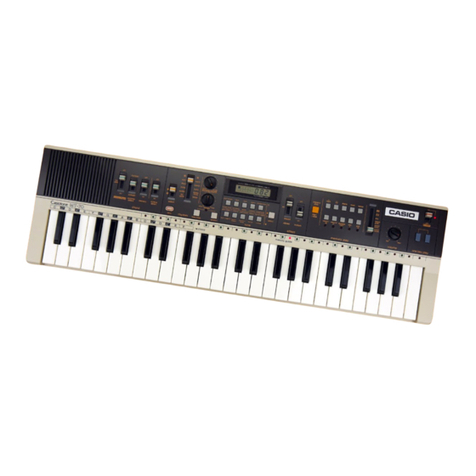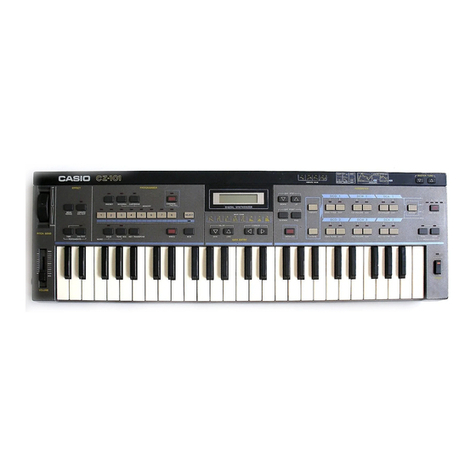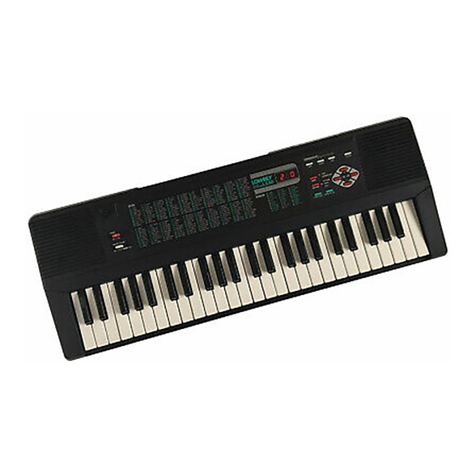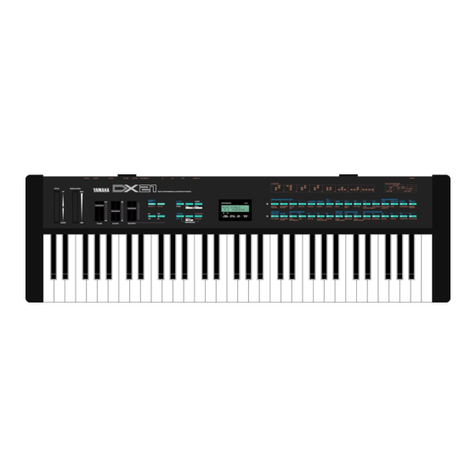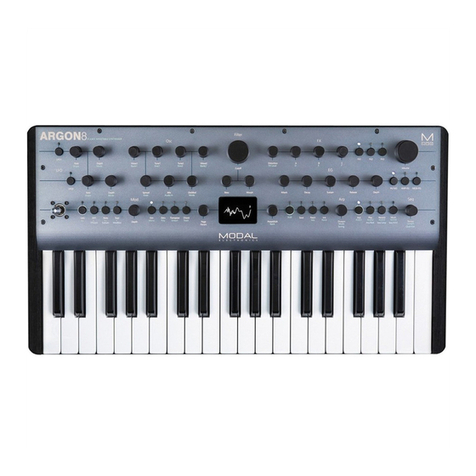
*Even when using household electricity or acar battery, be sure that dry batteries are also
inserted at the same time in order to protect the memory data.
*When connecting or unplugging an adaptor, please be sure to turn off the power
beforehand.
*If you do not intend to use your instrument for longer periods, please remove the dry bat-
teries in order to avoid damage due to battery leakage.
*Please be sure to use only the specified AC or car adaptors. Any damage caused by the
use of other adaptors is not covered by the warrantee.
*If an adaptor is used for any length of time, the adaptor itself will heat up somewhat, but
this is no cause for alarm. However, do unplug the adaptor from the wall receptacle or
the cigar lighter when not using it.
*Concerning protection of the memory contents
The tone data entered into the internal memory or another will be backed up by the inserted
batteries and not be cancelled even if the power switch is turned off when an AC adaptor or
car adaptor is connected as well as during use of aDC power supply (dry batteries). If, however,
no batteries are inserted or the inserted batteries are already spent, the memory contents may
be erased or altered, so please be careful.
*The memory contents will not be erased during battery replacement if the new batteries are
inserted within 10 minutes after the old ones have been removed. Therefore please insert 6
new batteries within this space of time.
*Battery life is about 12 months in case of using the battery only for protecting memories.
Auto-Power-Off function
APO
OFF ON
When the APO (Auto-Power-Off) switch is set to ON
This function automatically turns power off approximately 6minutes after
the last operation was performed in order to avoid unnecessary power con-
sumption. If this has happened, set the power switch to OFF and then turn
the power on again by setting it back to ON.
When the APO (Auto-Power-Off) switch is set to OFF
Setting the APO switch to OFF cancels the Auto Power Off function explained
above.
When you use this instrument while the power indicator has started to flash due to weaken-
ing of the batteries, the power will turn off automatically just before the data in the internal
memory is erased in order to protect this data, regardless of whether the APO switch is set
to ON or OFF. When this happens, stop using the instrument and immediately replace the
used batteries with new ones.
,_____
The types of data protected by battery back-up even when power is turned off are as follows.
•Internal memory tone data
•Tone data in the compare/recall area
•Master tune
•Key transpose
•Bend range
•Portamento time
•Tone numbers and levels of the Tone Mix function
